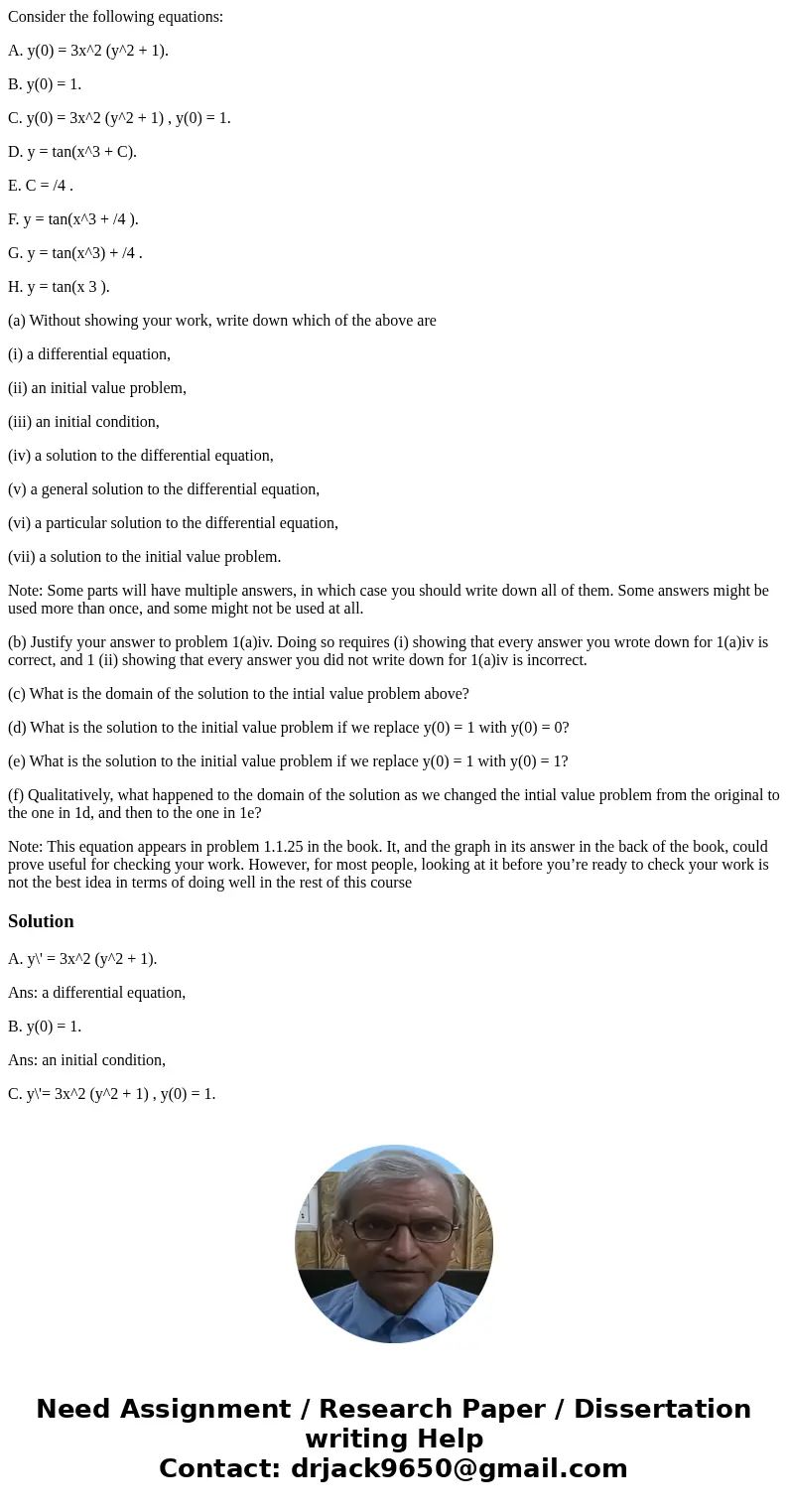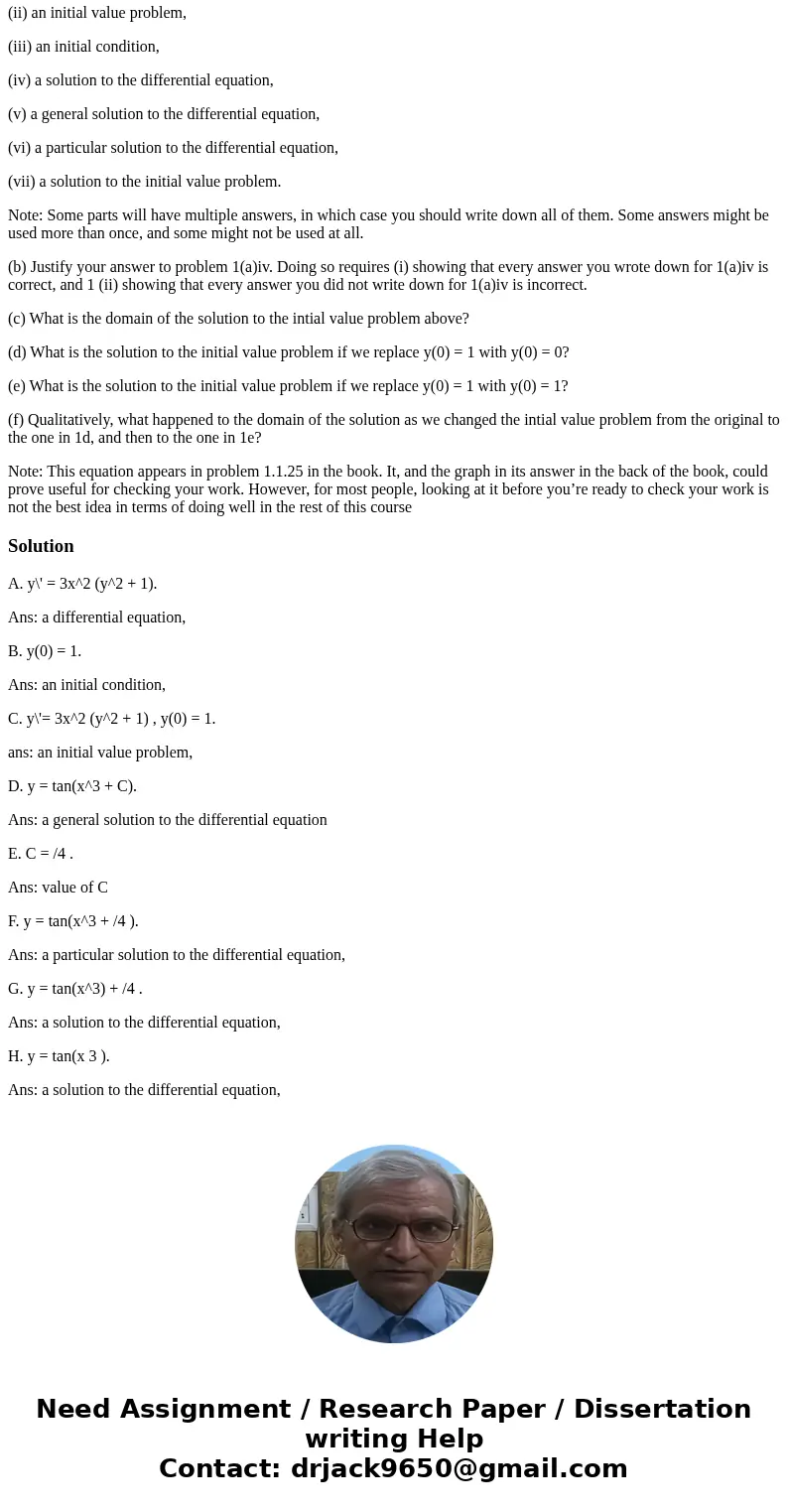Consider the following equations A y0 3x2 y2 1 B y0 1 C y
Consider the following equations:
A. y(0) = 3x^2 (y^2 + 1).
B. y(0) = 1.
C. y(0) = 3x^2 (y^2 + 1) , y(0) = 1.
D. y = tan(x^3 + C).
E. C = /4 .
F. y = tan(x^3 + /4 ).
G. y = tan(x^3) + /4 .
H. y = tan(x 3 ).
(a) Without showing your work, write down which of the above are
(i) a differential equation,
(ii) an initial value problem,
(iii) an initial condition,
(iv) a solution to the differential equation,
(v) a general solution to the differential equation,
(vi) a particular solution to the differential equation,
(vii) a solution to the initial value problem.
Note: Some parts will have multiple answers, in which case you should write down all of them. Some answers might be used more than once, and some might not be used at all.
(b) Justify your answer to problem 1(a)iv. Doing so requires (i) showing that every answer you wrote down for 1(a)iv is correct, and 1 (ii) showing that every answer you did not write down for 1(a)iv is incorrect.
(c) What is the domain of the solution to the intial value problem above?
(d) What is the solution to the initial value problem if we replace y(0) = 1 with y(0) = 0?
(e) What is the solution to the initial value problem if we replace y(0) = 1 with y(0) = 1?
(f) Qualitatively, what happened to the domain of the solution as we changed the intial value problem from the original to the one in 1d, and then to the one in 1e?
Note: This equation appears in problem 1.1.25 in the book. It, and the graph in its answer in the back of the book, could prove useful for checking your work. However, for most people, looking at it before you’re ready to check your work is not the best idea in terms of doing well in the rest of this course
Solution
A. y\' = 3x^2 (y^2 + 1).
Ans: a differential equation,
B. y(0) = 1.
Ans: an initial condition,
C. y\'= 3x^2 (y^2 + 1) , y(0) = 1.
ans: an initial value problem,
D. y = tan(x^3 + C).
Ans: a general solution to the differential equation
E. C = /4 .
Ans: value of C
F. y = tan(x^3 + /4 ).
Ans: a particular solution to the differential equation,
G. y = tan(x^3) + /4 .
Ans: a solution to the differential equation,
H. y = tan(x 3 ).
Ans: a solution to the differential equation,


 Homework Sourse
Homework Sourse